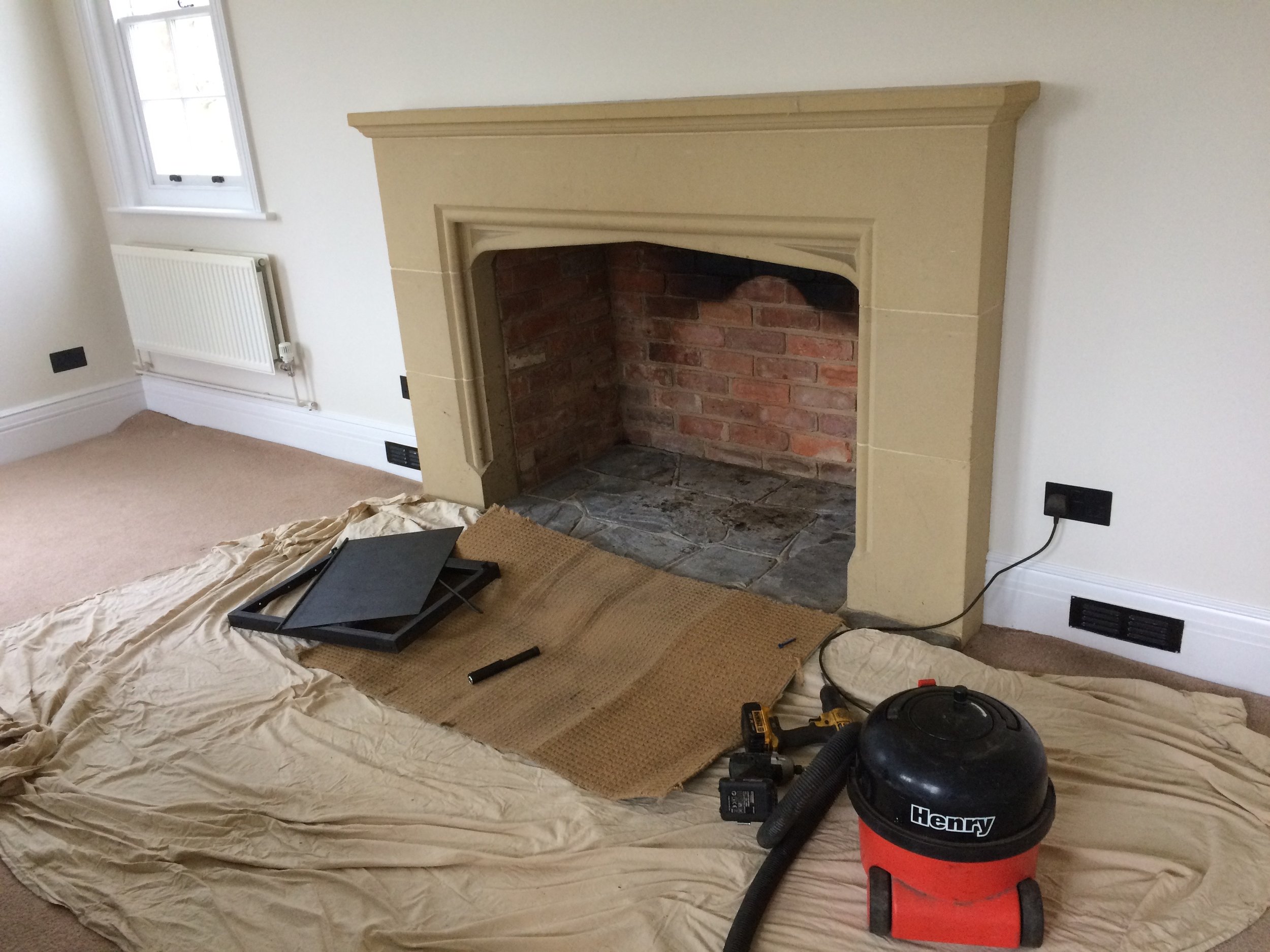This is essential when you have a fire lit - the smoke produced (hopefully) flies up the chimney along with room air, creating a slight vacuum (or negative pressure) in the room, and air will be sucked from other parts of the house and ultimately from outside to replace the air going up and out, through the chimney.
Well located and correctly sized air vents near the fireplace can help make these drafts less ankle biting, but when the fire is not in use (probably 99% of the time!), there is no need to allow your expensively heated warm air to keep disappearing up the chimney, or to suffer the uncomfortable drafts caused by this air movement. I have recently measured airflow in a fairly typical “inglenook fireplace” chimney at over 12 cubic metres per minute. The air outside was 3.8 degrees C, inside was 12C, and the air leaving the flue was 9.5C. I can’t tell you how much wasted central heating fuel that equates to, but it’s a lot - and obviously it makes quite a contribution to global warming….
None of this is news: most victorian inset fireplaces were designed with dampers, and today in many parts of Europe and the U.S. a damper is seen as a vital and common sense part of fireplace/flue design. In the U.K. however people tend to either simply put up with the draft and cold, or use a variety of Heath Robinson contraptions to block the flue when not in use.
Frankly, a bin bag full of rockwool jammed up a chimney will do a pretty good job of preventing drafts, as will chimney balloons, chimney “sheep” and various other products – but the experience of removing, storing and replacing them to have a fire generally proves such a sooty, unpleasant chore that the fireplace effectively falls out of use.
A made to measure chimney damper is a very different proposition! Although different fireplace and flue configurations require different solutions, essentially you have a steel valve that you can open or close within seconds to either enjoy a hearty fire, or allow your central heating to do it’s job without constantly fighting the equivalent of a permanently open window in the house! To ensure trouble and smoke free operation it is essential that the damper is carefully designed and built to suit each individual situation by someone with a comprehensive understanding of fireplace and chimney theory and practice. I can safely say I am the most experienced person in the field in the UK, having made and fitted hundreds of dampers over the last 25 years or so. In the last few years I have been privileged to work alongside the very best architects and builders in the land, fitting tailor made creations in all kinds of freplaces and properties, and pride myself on my ability to do a difficult, dirty job with minimal inconvenience and substantial lasting benefits to homeowners.
There are two main types of Dampers; Chimney Top and Fireplace. Please look at the information on each, check the FAQ’s page and drop me a line.
Note: You MUST NOT fit a damper, or otherwise obstruct a flue serving a gas fire !!

